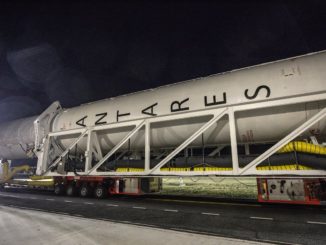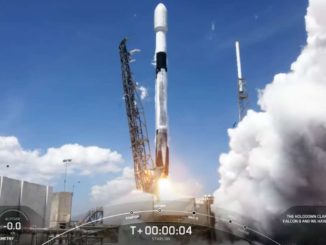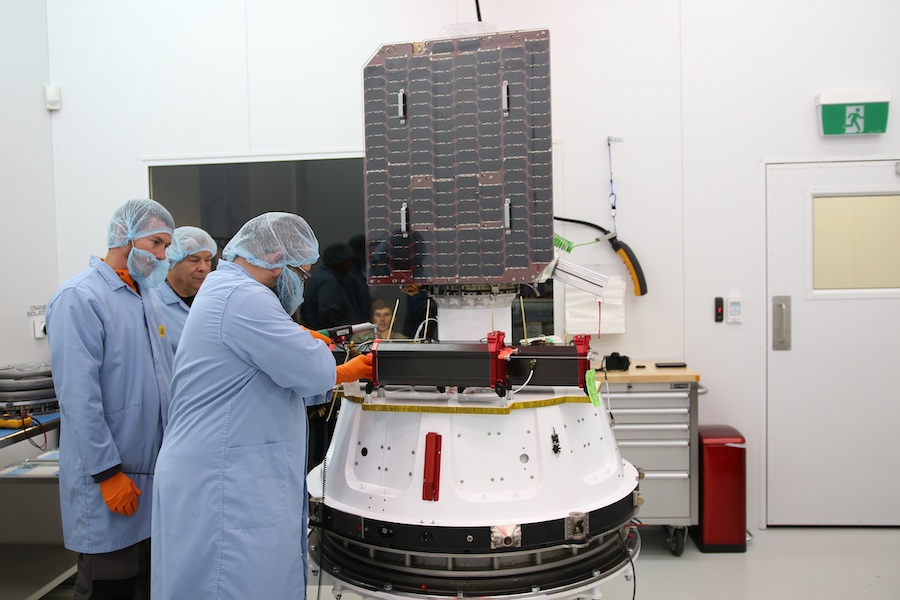
Rocket Lab’s next launch from New Zealand is set for no earlier than June 27 with a bundle of spacecraft including a commercial Earth-observing microsatellite for BlackSky, two CubeSats for U.S. Special Operations Command, a pair of tiny prototype data relay nodes for Swarm Technologies, a student-built payload from Australia, and a satellite whose identity and owner remain a secret.
The rideshare mission was arranged by Spaceflight, a Seattle-based company that specializes in aggregating small satellites and booking a shared flight with a launch provider.
The seventh launch of Rocket Lab’s Electron booster is scheduled for a two-hour window June 27 opening at 0430 GMT (12:30 a.m. EDT; 4:30 p.m. New Zealand time), the launch company announced Monday. Rocket Lab says it has launch opportunities available through July 10.
Seven satellites will ride the 55-foot-tall (17-meter) Electron rocket into orbit roughly 280 miles (450 kilometers) above Earth. It will be Rocket Lab’s third mission of 2019 as officials aim to ramp up to a cadence of about one launch per month by the end of the year.
The rocket will take off from Rocket Lab’s Launch Complex 1, a privately-operated facility on Mahia Peninsula, located on the eastern coast of New Zealand’s North Island.
“We’re looking forward to not only our inaugural flight with Rocket Lab, but a long term partnership to increase access to space via frequent launches,” said Curt Blake, CEO of Spaceflight. “Having the Electron in our arsenal of small launch vehicles provides our customers with a low-cost, flexible option to get on orbit.”
The mission is nicknamed “Make it Rain” in a nod to the damp climate of Seattle, the home of Spaceflight, and at Rocket Lab’s launch site in New Zealand.
The biggest payload on the next Electron launch is the BlackSky Global 3 Earth-imaging satellite — with a launch weight of approximately 123 pounds (56 kilograms) — set to join BlackSky’s first two commercial surveillance craft already in orbit after launches last year.
BlackSky is a business unit of Spaceflight Industries, which is also the parent company of Spaceflight, the rideshare launch broker.
Like the two BlackSky Global satellites currently in space, BlackSky’s third satellite will be capable of capturing up to 1,000 color images per day, with a resolution of about 3 feet (1 meter).
Last year, Spaceflight Industries announced a joint venture with Thales Alenia Space — named LeoStella — to build the next 20 BlackSky satellites in Tukwila, Washington, following the initial block of four smallsats that includes the BlackSky Global 3 spacecraft launching later this month.
BlackSky says its fleet of satellites will enable frequent revisits over the same location to help analysts identify changes over short time cycles. The company expects to have eight satellites in orbit by the end of the year, and aims to eventually field a constellation of up to 60 Earth-imaging spacecraft deployed.
One major customer for BlackSky could be the U.S. government. The National Reconnaissance Office, which owns the government’s spy satellite fleet, announced three study contracts earlier this month with BlackSky, Maxar Technologies and Planet to assess the usefulness of commercial imagery for U.S. intelligence agencies.
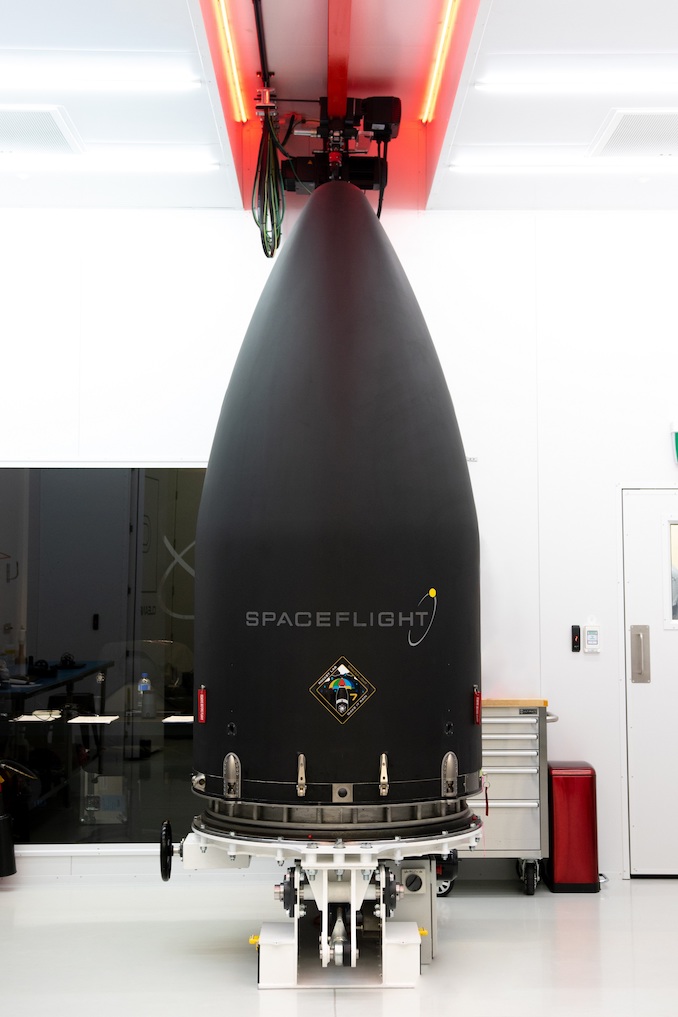
The June 27 launch will also deliver two Prometheus CubeSats to low Earth orbit for U.S. Special Operations Command. The Prometheus smallsats launching later this month are the latest in a series of CubeSats designed to test low-cost, easy-to-use communications relay technologies that could be used by special operations forces on combat missions.
According to information previously released by the military, the Prometheus spacecraft demonstrate the transmission of audio, video and data files from portable, low-profile, remotely-located field units to deployable ground station terminals using over-the-horizon satellite communications.
Two SpaceBEE CubeSats from Swarm Technologies, each weighing less than 2 pounds (1 kilogram), will also be aboard the next Electron launch. The “BEE” in SpaceBEE stands for Basic Electronic Element.
Swarm is developing a low-data-rate satellite communications fleet the company says could be used by connected cars, remote environmental sensors, industrial farming operations, transportation, smart meters, and for text messaging in rural areas outside the range of terrestrial networks.
Swarm’s first four SpaceBEEs launched in January 2018 aboard an Indian Polar Satellite Launch Vehicle without approval from the Federal Communications Commission. After an investigation into the unlicensed launch — a first for the U.S. commercial satellite industry — the FCC fined Swarm $900,000 but allowed the launch of three more satellites on a Falcon 9 rocket in December.
The FCC raised concerns that the first four SpaceBEEs, each about the size of a sandwich, were too small to be reliably tracked by the military, which maintains a public catalog of objects in orbit. Like the satellites launching this month, the SpaceBEEs shot into orbit in December used a larger design based on a one-unit, or 1U, CubeSat standard.
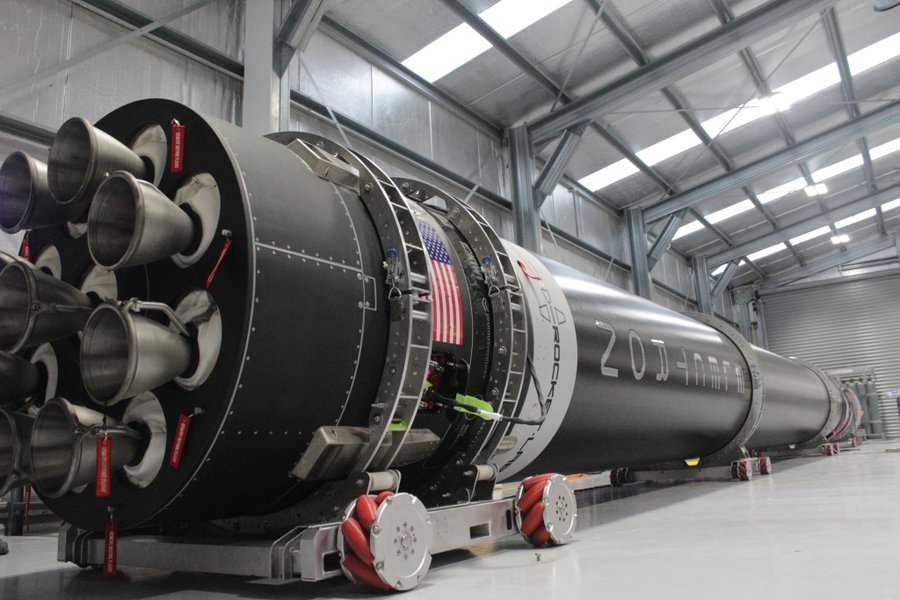
The ACRUX 1 CubeSat developed by the Melbourne Space Program, a non-profit educational organization affiliated with the University of Melbourne in Australia, is also launching on the Electron rocket. Built by engineering students, ACRUX 1’s primary mission is education.
Australia’s first amateur satellite, Australis-OSCAR 5, was also built by students in Melbourne. Launched in 1970, it was the first amateur satellite designed and assembled outside North America.
“Since then, Australia’s satellite-related space capabilities have been stymied by outdated policies and regulation, hindering growth of the nation’s space industry and support of its incredible local talent,” members of the Melbourne Space Program wrote in an update on the organization’s website.
“In light of these challenges and obstacles, the Melbourne Space Program considers the design and build of ACRUX 1, as well as the successful securing of an international launch and related licenses, as significant accomplishments in themselves,” team members wrote on the group’s website.
The student engineers who developed the ACRUX 1 CubeSat say they will consider the mission fully successful if they receive a “ping” signal from the spacecraft in orbit.
“Receiving that ping from ACRUX 1 may seem like a modest mission goal, but the truth is far from it,” the team wrote. “That ping would mean ACRUX-1 has not only turned on in space, but has also communicated data back to us at our ground station in Greater Melbourne. In other words, it demonstrates that the satellite system built by our engineers actually works in space.”
A seventh satellite will ride to space on the “Make it Rain” mission, but Spaceflight and Rocket Lab have not revealed its identity or owner.
Email the author.
Follow Stephen Clark on Twitter: @StephenClark1.


